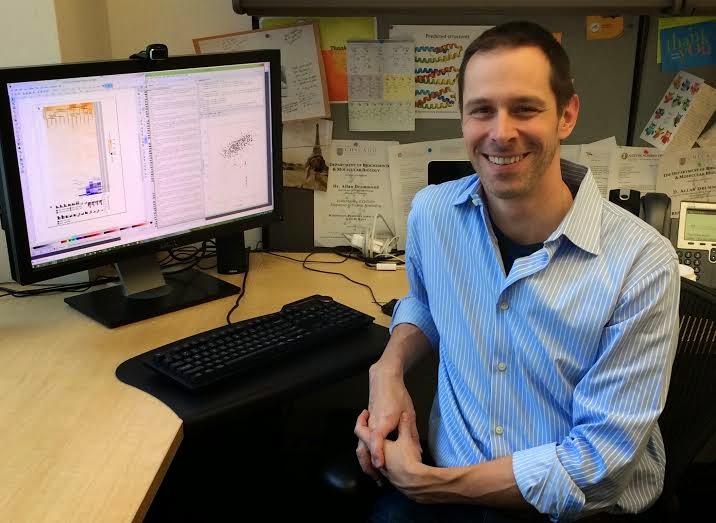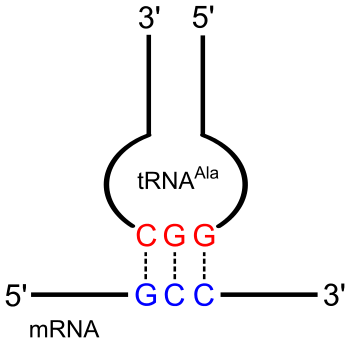 |
| Dr. D. Allan Drummond in his office at the University of Chicago |
| English: Codon-anticodon pairing exemplified for a tRNA Ala (Photo credit: Wikipedia) |
To draw an analogy, consider another fundamental biological process: digesting food! You eat food and your body turns it into all sorts of things by digestion. So what happens when you chemically modify your food, for example by cooking it? How does cooking change digestion? Is it easier or harder to digest cooked food? Does digestion work more or less efficiently on this modified food? These are really basic questions, and because the process is so important, it just feels like getting in there and studying it is likely to yield important insights. That’s one of the things that drove us: raw curiosity about how chemical modifications change a basic biological process, in this case tRNAs and translation.
| Drosophila melanogaster, fruit-fly. (Photo credit: Wikipedia) |
AD: At the most basic level, our study reveals a surprising and new way in which nutrient availability alters the evolution of whole genomes. To reach this conclusion, we stack up a set of results, one on top of the other. We discover big changes in the way animals (fruit flies) within a genus encode their proteins in their genomes (which codons they use), and show that these changes reflect the relative accuracy with which alternative codons for the same amino acid are translated.
Making the educated guess, based on our own study and previous work, that a tRNA modification is involved, we measure the tRNA modification levels for multiple species, and find that these levels change systematically. Then we show how just these modification level changes can be sufficient to explain the change in translational accuracy and genome changes. And we make a prediction, which the data support, that the changes in tRNA modification levels as flies develop from eggs into larva into pupae into adults should correspond with changes in the codons used in genes that are turned on during each developmental stage.
The question I sense you’re asking is, should cancer/disease studies garner more media attention than fundamental studies? Or, does it bother me if the media doesn’t seize on what we’ve found and broadcast it to the world?
Short answer: not really. Broad media attention is not the goal, and doesn’t really help us or the science.
Reference:
Zaborske JM, DuMont VL, Wallace EW, Pan T, Aquadro CF, & Drummond DA (2014). A nutrient-driven tRNA modification alters translational fidelity and genome-wide protein coding across an animal genus. PLoS biology, 12 (12) PMID: 25489848




